There seems to be some confusion about what a winter pear is versus a summer one.
You might see some people describe winters as those that must ripen in cold storage for a period of several weeks or more and summers as those that are ripe straight off the tree.
That’s not entirely accurate.
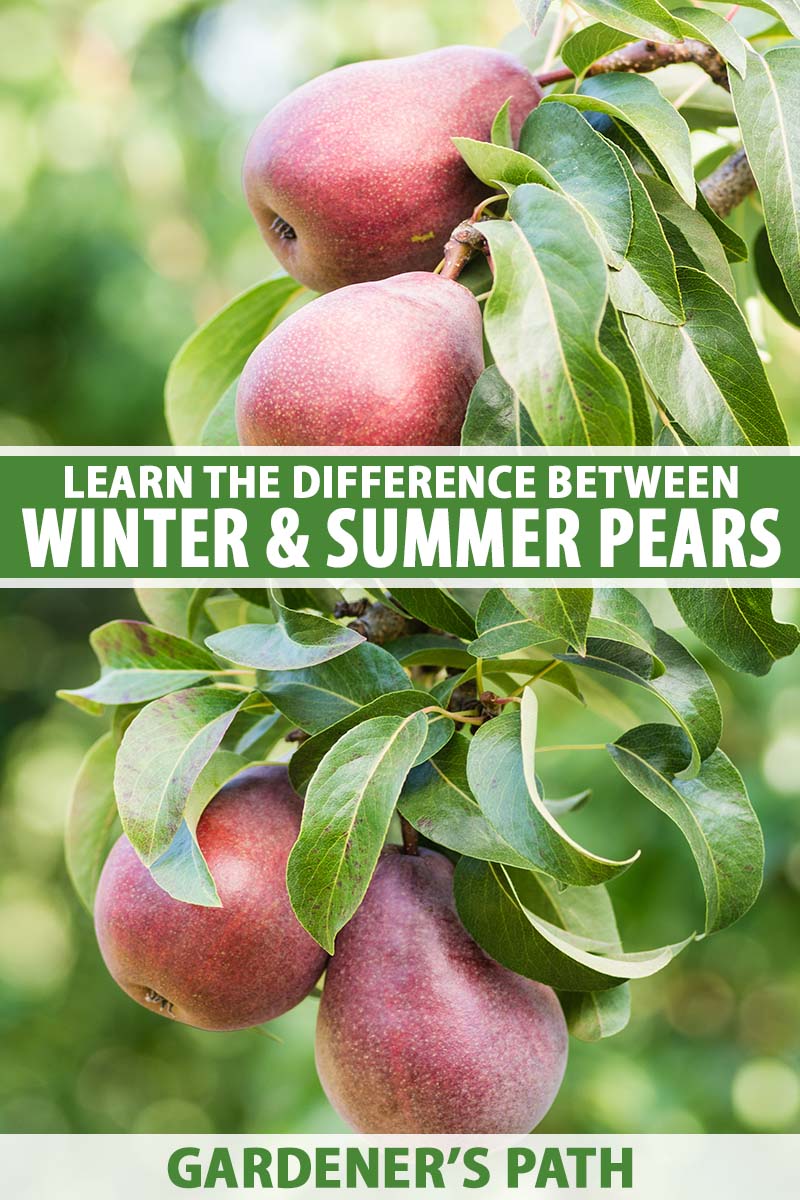
We link to vendors to help you find relevant products. If you buy from one of our links, we may earn a commission.
The two types of fruits are categorized by commercial growers according to when the fruit is ready to harvest. That’s all there is to it.
Summers are ready to pick in the summer, typically around August or early September. Winters are ready starting in late September through October.
But there are a few winter types that are sweet enough to eat straight off the tree and a few summer types that require cold storage to fully come into their sweetness, so they can’t solely be defined by how much cold storage they require to taste their best.
There are a few other broad generalizations that we can make about the two categories as well, and we’ll talk about those in a bit. But there are always exceptions.
There are even some cultivars that ripen right in the period where the two categories overlap, and growers don’t totally agree on which category they belong in.
So, it’s best to think of the two seasonally-defined categories as a general guideline rather than a hard-and-fast rule.
Don’t worry if you’re a bit confused. We’ll make it all a bit more clear in just a second. Here’s what we’ll go over to that end:
What You’ll Learn
Whether a pear fits into either category is less important than which trees it’s a compatible pollinator with, so we’ll talk a little about that as well.
Ready to sort it all out? Then let’s jump right in with the first topic we’re going to discuss:
What Is a Summer Pear?
Summer types are those that ripen starting in July and August.
Most European pears are winter types, but ‘Bartlett,’ ‘Bon Chretien,’ ‘Flamingo,’ ‘Red Bartlett,’ ‘Rosemary,’ ‘Seckel,’ ‘Starkrimson,’ and ‘Tosca’ are all summer types.
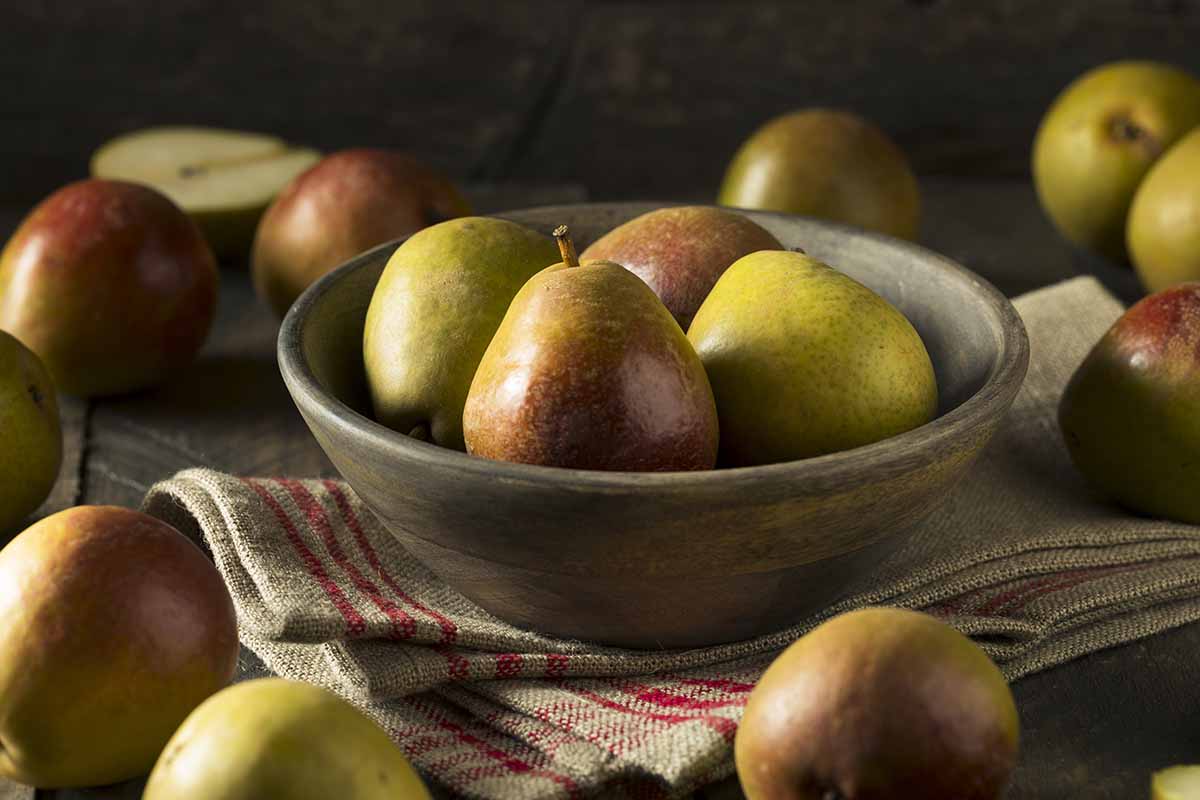
The fruits don’t ripen perfectly on the tree, no matter which category they fit into.
They tend to get mealy or soggy in the middle before the exterior is fully sweet since they ripen from the inside out. So we pluck them when they are mature but before they become overripe.
Summer fruits tend to ripen quickly, have thin skin, and don’t store well.
They should be placed in a cool area for at least two or three days to be allowed to fully ripen, and once they do, you should eat them immediately.
Most summer types are medium in size and tend to be a bit less sweet than a winter type that has been stored until fully ripe. But there are exceptions.
‘Bartlett’ pears, for instance, need five days in cold storage to taste their best, and they can last for a month or so in storage.
What Is a Winter Pear?
A winter type is one that matures in the early fall, and it typically has a thick skin that facilitates long-term storage.
These types usually taste best if they’re allowed to ripen slowly, depending on your taste preferences, of course.
These types store longer than summer types and can last in cold storage until the tulips start to burst through the ground in spring.

If you opt to do some cold storage, the flavor of the fruit will be altered in a way that most people find appealing.
The cold inhibits but doesn’t stop the ripening process. Cold storage gives them a sweeter flavor and softer, smoother flesh than they’d have straight off the tree.
But that doesn’t mean you can’t eat them fresh off the tree or just leave them on the counter for a few days.
Even though the fruits aren’t technically ripe, they can still be tasty fresh off the tree, and some are wonderful this way if you want a tangy, more apple-like flavor. But stick a few in a cold basement for a few weeks and see how the flavor changes.
Fresh winter pears tend to be firm and not very sweet. If left to ripen on the tree, as noted above, the middle will usually turn mushy before the outer parts turn sugary sweet.
But allowing them to ripen slowly after harvest in cold storage around 32°F allows the flesh to become evenly sweet throughout.
Some of the most popular pears are winter types, like ‘Anjou,’ ‘Bosc,’ and ‘Concorde.’ We have a guide that talks about the best winter types if you’re interested in learning more.
Pairing Winter and Summer Pears for Pollination
Pear trees aren’t self-fruitful for the most part, and they need a second tree nearby in order to pollinate and flower.
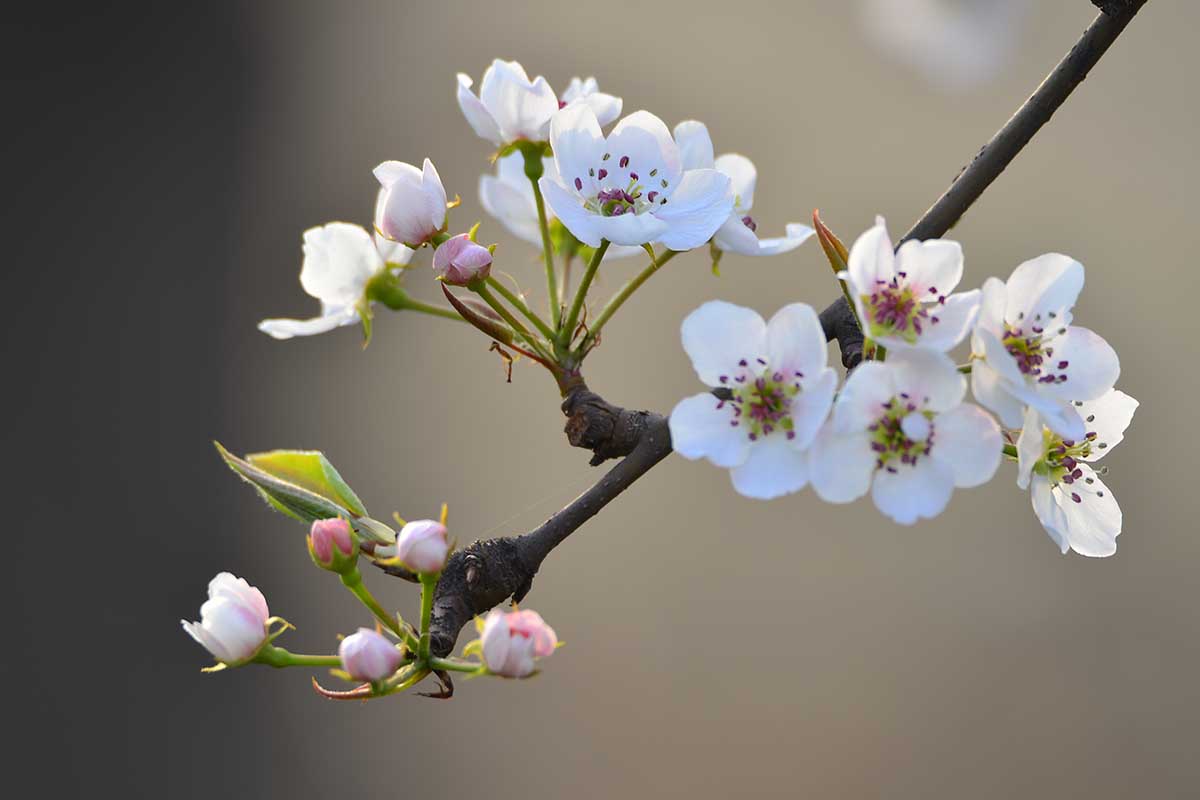
When it comes to winter versus summer fruits, the trees themselves are the same. You can’t look at a tree and tell if it’s a summer type or not. It’s determined by the fruit.
Just because a tree is a late harvesting type, that doesn’t mean it flowers late as well. An early-harvesting pear might bloom later than most others. Bloom time isn’t determined by the type of fruit.
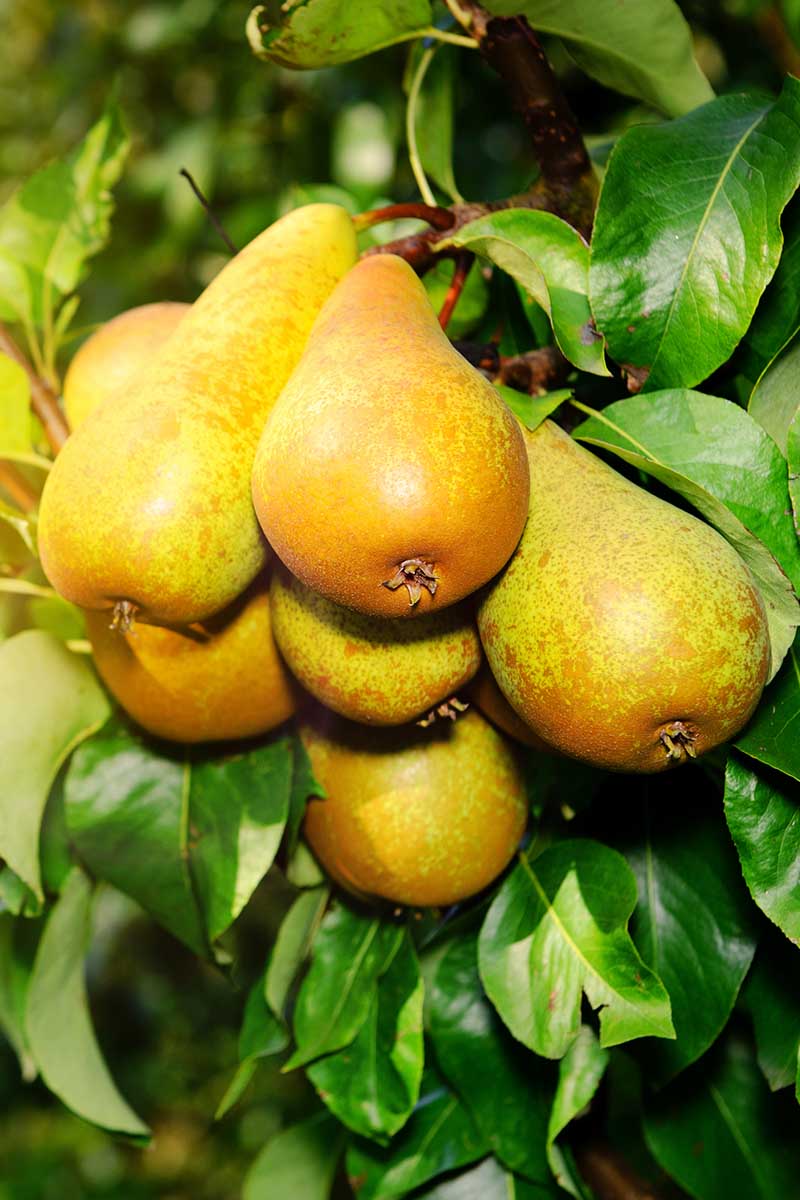
As we said, the categorization here is determined by growers, and there’s some overlap. For example, one grower might call ‘Warren’ a summer fruit, though others call it a winter type.
So when you’re picking tree pairings, don’t rely on whether it’s a winter or summer type. Take note of its bloom time and pick a companion that flowers at a similar time.
If you’d like more information on pear pollination and how to find a pollinator friend for your tree, check out our guide.
Don’t Get Wrapped Up in Labels
When it comes to choosing a pear, don’t worry so much about the category.
Just pick one you like with the characteristics you prefer, choose a pollinator to go with it, and don’t get too hung up on labels.
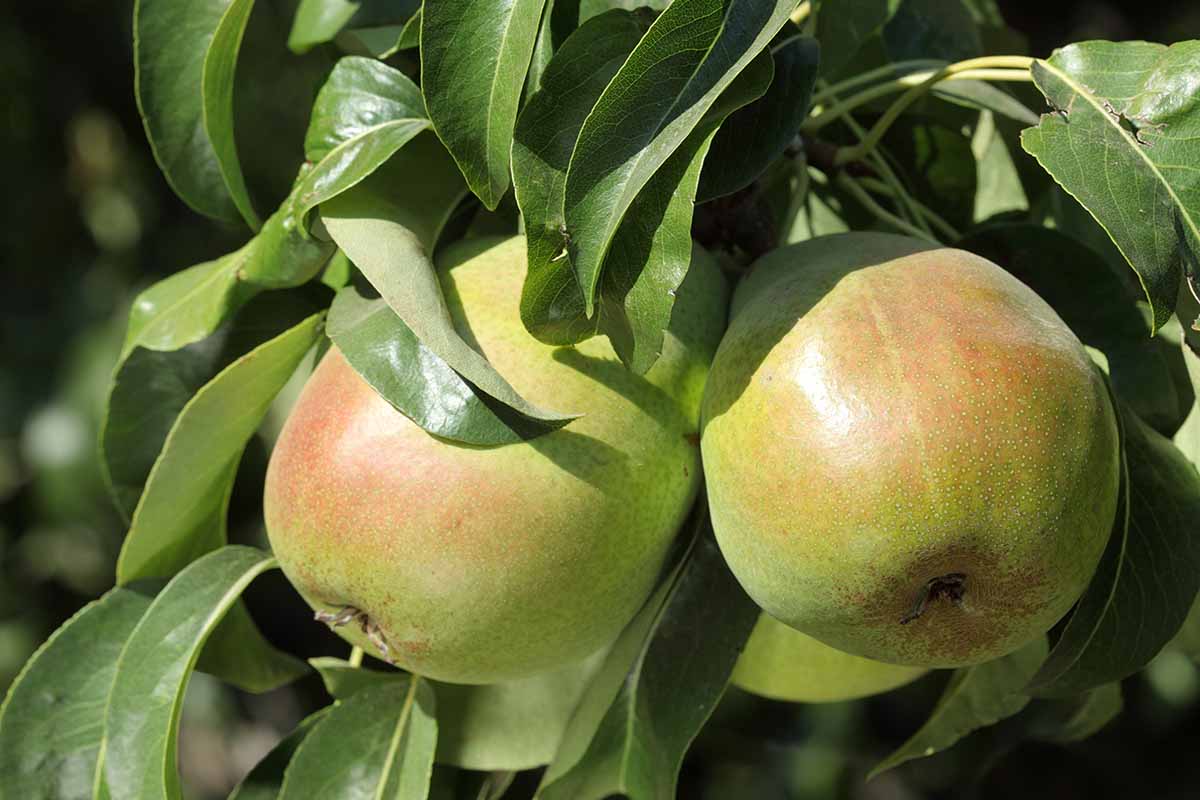
These category descriptions are largely there for commercial growers, to help them determine when the fruit matures and how to store and transport it.
The most important element for the home grower is figuring out how to enjoy the bounty!
So, how do you like to use your pears? Are you a fresh fruit lover? Or do you prefer to bake them? What’s your favorite kind to cook with? Share with us in the comments.
Hopefully this guide cleared things up a bit on how these fantastic fruits are grouped seasonally.
If you want to know more about growing your own pears, we have a few other guides that might be useful. Check these out next: